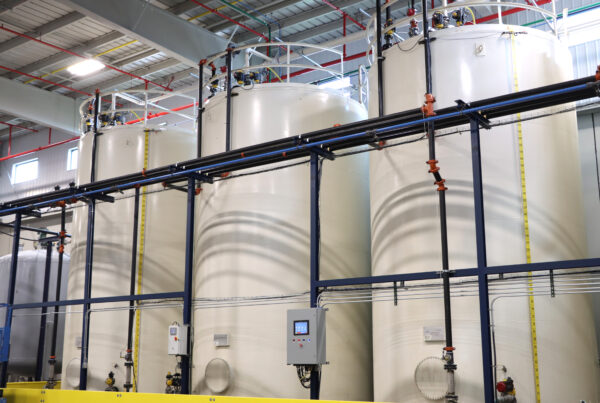Today, the primary objectives of the cooling technology suppliers, while aiming at improving energy efficiency, also pay attention to the development of components without harmful effects for the environment, i.e. manufactured with low ODP (Ozone Depletion Potential) and GWP (Global Warming Potential) values. And this attention concerns the suppliers of both the European and the American market of which this article deals in particular. Towards “greener” choices.
Since ever, designers seek to combine greater efficiency with reduced dimensions, or a low thermal conductivity with the use of a lower amount of insulation material, so as to allow greater storage capacity. But in the past, the reconciliation of these criteria generally required tradeoffs, because the improvement of a parameter often negatively affected the others. However, today insulation materials and production techniques offer interesting innovations, which, while trying not to affect costs too much, help improve overall user needs, first the environmental one. Hence the need for industries to switch to “greener” blowing agents and refrigerants. Today, the debate continues between hydrofluorocarbons (HFCs), mainly used in the United States, and hydrocarbons (HCs) such as pentane, used in Europe and other parts of the world. It is worth remembering that after the Montreal Protocol, the industry left the chlorofluorocarbons, which, although effective, were banned because of ozone depletion. Many manufacturers then switched to hydrochlorofluorocarbons (HCFCs), in particular HCFC 141b, which represent an intermediate solution. Although effective, they still present ozone problems, thus contributing to global warming. But surely a change is underway in the U.S. market, as even two giants such as Coca-Cola and GE Consumer, one of the largest appliance manufacturers in the world, are looking to hydrocarbon-based materials.Decades of Dedication: Polyurethane Systems is our sole focus
About polyurethanes…
Certainly, rigid polyurethane foams are widely used in refrigeration and cooling technologies for their effectiveness.
The polyurethanes division of BASF Polyurethanes in Lemfoerde, Germany, conducted a cold chain study, following a frozen pizza from the warehouse to the refrigerator. This study showed that if all the equipment and facilities had been insulated with an optimum thickness of rigid polyurethane foam, an energy saving factor of 20:1 would have been achieved, and the energy saved would have been 16 times that required to produce the insulating material itself. During this study, the material thickness was also tested. Finding showed that large energy savings were possible with minor changes. For example, a freezer with a 50 mm thick insulation emits 23kg of CO2 in seven days, whereas a model with 60 mm thick insulation emits only 15.5 kg of CO2 over the same period of time.
The efforts of manufacturers…
Manufacturers, particularly in the field of commercial and residential refrigeration, increasingly develop cooling technologies meeting environmental, economic and regulatory issues through new production techniques and new insulating materials as well as efficiency standards, so as to meet also the consumers’ requirements for smaller footprints, lower thermal conductivity, and higher storage capacity. And the efforts in this direction are different: some manufacturers use hydrocarbon-based insulation or blowing agents, some have chosen vegetable-based blowing agents, others prefer the vacuum insulated panels, and still others are focused on materials with high flow rates to improve insulation.
Hydrocarbons in the forefront…
The customers’ needs are often an impetus for the companies to adopt new, more efficient and environmentally friendly materials. Delfield, an American company, for example, has switched for its entire cooling technology to Ecomate, a polyurethane foam developed by Foam Supplies, also an American company, that uses methyl methanoate blowing agents. Ecomate is a material with zero of ODP and GWP, and therefore not subject to VOC regulations in force in the U.S.A.
This foam can be blended with a polyol or isocyanates, and treated in the same way as HCFC 141b, because they have almost identical properties, including boiling point, solubility and flammability.
And GE Consumer and Industrial too, as we have seen, has chosen hydrocarbons for its Monogram refrigerator. The company, which has filed a SNAP (Significant New Alternatives Policy) petition with the U.S. Environmental Protection Agency, has chosen cyclopentane as a blowing agent to replace commonly used HFCs. The decision is partly due to the company’s presence worldwide, with the consequent need to adopt a single technology for all markets.
Fourth-generation blowing agents…
Many suppliers are launching or developing new blowing agents, which are among the most affected by the new environmental legislation. The blowing agents are, in fact, one of the factors, along with the matrix within the polyurethane foam, which affect the thermal conductivity of the foam and are key elements in the formation of a fine cellular structure, because they carve out cells within the foam and remain trapped inside the cells. DuPont has developed the Fea-1100 fluorocarbon, a fourth-generation blowing agent for polyurethane foams featuring zero ODP and a GWP of 9.4.
According to the National Oceanic and Atmospheric Association (NOAA), Fea-1100 has a short atmospheric life of approximately 24 days. It also features a low thermal conductivity and is non-flammable, with a boiling point of 33ºC.
According to DuPont, in this way the problems of handling and processing associated with the use of low boiling point materials, such as HFC-245fa, are eliminated, thus achieving an optimal Fea level in foam formulations to provide the desired foam properties.
Innovations for insulation panels too…
Innovations, however, do not only concern blowing agents. In fact, companies are striving, for instance, towards vacuum insulation panels, which feature an excellent R-value per inch, often exceeding 20. The vacuum insulation core is microporous fumed silica, which is poured into a plastic membrane and formed into a board shape. The panel goes through a vacuum chamber where the gas is evacuated and a metalized plastic film is formed around the membrane and heat-sealed at the edges. Vacuum insulation panels feature high efficiency, but are subject to punctures, and that is why suppliers adopt more resistant protective films. U-Vacua is Panasonic’s vacuum insulation panel. It performs 20 times better than hard urethane foam and 38 times times better than glass wool, allowing for a high insulation in a thin form. It achieves a thermal conductivity of 0.012 wMk at 24 °C, with a temperature range from -40 °C to 105 °C. In refrigeration applications, the vacuum insulation panel, which is usually inserted between the inner and outer cabinet lining, is mainly used in combination with standard blowing agents, in order to ensure optimal insulation while keeping the cabinet rigidity. The ultrathin
thickness allows manufacturers to increase the internal volume of the cabinet, while maximizing efficiency.
Increasingly low thermal conductivity
Same performance for the Slimvac vacuum microporous insulation panels for refrigerators and freezers of the American Microtherm company, featuring an outer waterproof lining. This lining is composed of multiple polymer layers, each of which contributes to a long working life while keeping panel performance. These panels feature a thermal conductivity of 4.2 mW/mK, a value which is approximately five times lower than that of polyurethane foam. The products of the German Va-Q-Tec, in turn represent an important breakthrough in the field of vacuum insulation panels.
The core of the panel is made of inorganic oxides containing up to 80% of fumed silica, IR opacifiers and small amounts of organic fibers.
Va-Q Plus is one of the latest products developed by the company, and is manufactured with a new technique that allows to obtain different shapes and complex geometries, such as cylinders and panels with holes. This panel features a low thermal conductivity of 0.0035 W/(mK).




